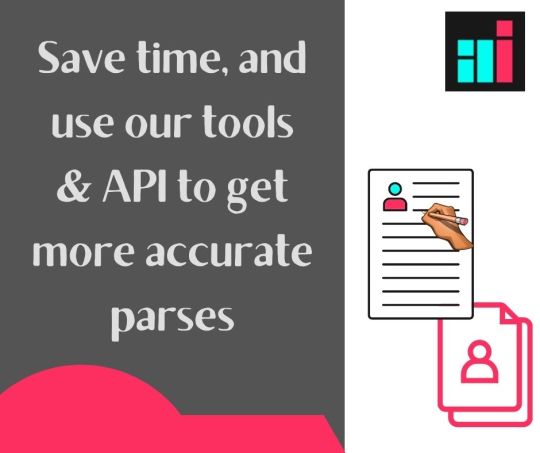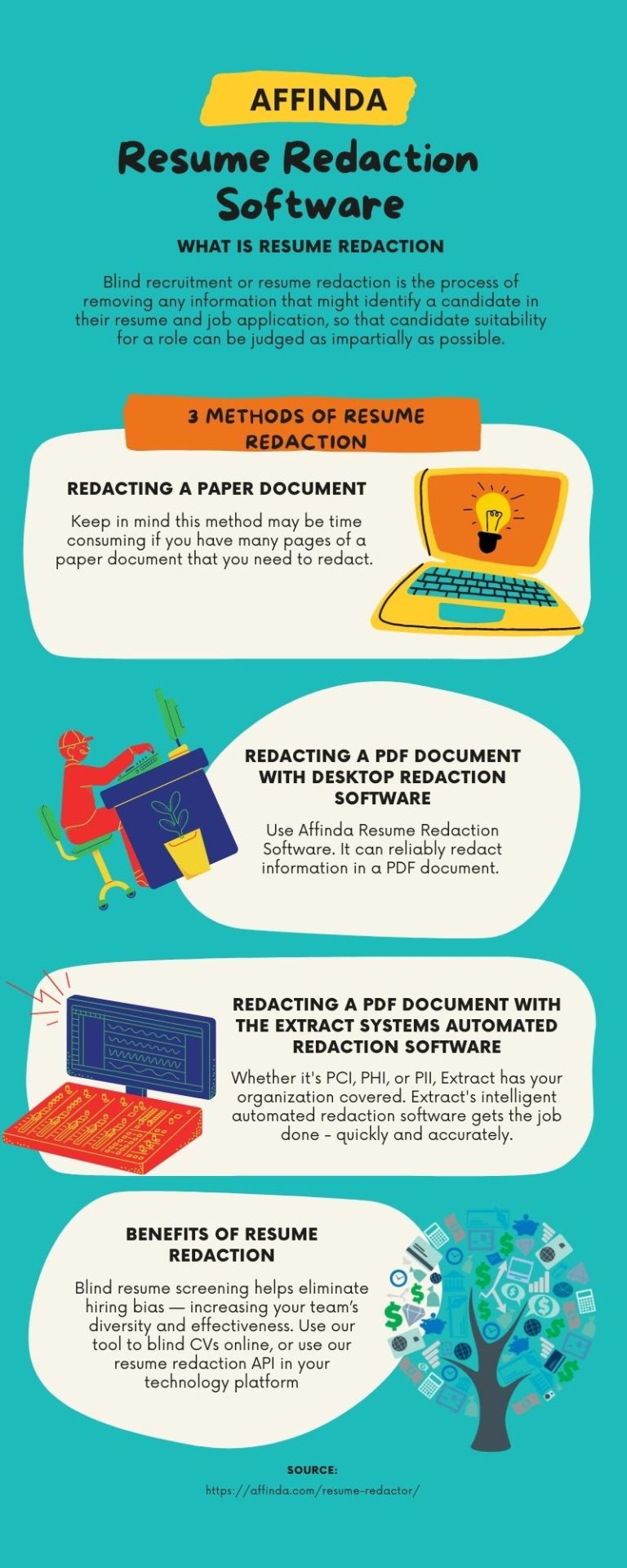#resume parser using nlp
Explore tagged Tumblr posts
Text
Resume Screening Using NLP

Resume shortlisting can be tedious, but NLP can automate and simplify the process. By analyzing resumes for key skills, experience, and qualifications, NLP helps recruiters efficiently identify top candidates. Click here to read the full blog
0 notes
Text
Resume Parser – A next step for upcoming recruitment Industry/Revolutionizing Recruitment in coming years

Introduction
Imagine a resume parser as the ultimate digital librarian in the world of recruitment. Just like a skilled librarian effortlessly categorizes books by titles, authors, and genres, a resume parser dives into the vast sea of resumes, automatically extracting and organizing key details such as names, job titles, skills, and educational backgrounds and many more.
Backed by advanced technologies like natural language processing (NLP) and machine learning (ML), Furthermore, Using smart machines like ChatGPT, Anthropic, Gemini etc. this tool transforms unstructured resume content into a neatly structured format. It's like turning a chaotic pile of books into a perfectly organized library, where finding the right information becomes a snap job.
In the busy world of hiring, a resume parser is a helpful tool that saves time. It quickly goes through many resumes, picking out the most suitable candidates and showing them to recruiters in an easy-to-understand way. By handling the initial screening automatically, it allows recruiters to spend more time on important hiring decisions.
How resume parser works
A resume parser works by automatically scanning, reading and analyzing resumes to extract desired information and organize it into a pre-defined format
It basically reads resumes, picking & pulling up essential information and placing them in a structured format desired by recruiter. It also eliminates unnecessary and redundant information from CV so you don’t have to waste time reading and analyzing same contents.
Basically it goes like:
Reading Resume/CV > Processing on Content > Data Extraction > Data Picking > Structuring Content in format > Keyword Matching > Final Result.
Benefits of adapting resume parser in your recruitment Process
There are numerous benefits of getting resume parser on board in your recruitment process. Lets take a look in some of the major gains.
Time Efficiency
Fast process of reading, scanning, and putting in a structured manner in blink of an eye. You can even apply a batch process with resume parser. Just give it tons of resumes, press the button and grab a coffee
Accuracy
By eliminating upto 95% Human interaction, resume parsers provide consistent and objective evaluation of resumes, minimizing human errors and biases.
Scalability
Resume parsers shine with their scalability, effortlessly managing hundreds of resumes. This makes them perfect for both massive hiring campaigns and ongoing recruitment. They also handle resumes from different sources and formats, making them a great fit for global hiring needs
Enhanced Candidate Experience
Resume parsers accelerate the initial screening process, leading to quicker communication with candidates and a smoother overall experience. By automating the parsing, they ensure that every candidate is assessed based on consistent criteria, which enhances fairness throughout the selection process
Economical Cost
Any kind of automation always result in a great cost saving. And so does the resume parser. Right from the beginning it eliminates the human efforts and lots of layers of human intervention are skipped and hence results into a considerable cost saving. Along with that, Faster screening and selection reduce the overall time-to-hire, saving costs associated with prolonged vacancies.
Elevated decision-making
Resume parsers organize data in a structured format, allowing recruiters to make more informed decisions based on clear, quantifiable information like skills, experience, educational background etc. With the ability to generate detailed reports and analytics, recruiters can evaluate the success of their recruitment strategies and make data-driven adjustments
Resume parsing also offers other benefits, such as integrating with your current platform, using custom parsers to find specific data, and converting resumes in various formats into a consistent format that suits your needs.
Resume parser VS Traditional extraction methods
Here we can easily check the differences and Pro/Cons of using resume parser against traditional extraction methods of resumes.
Title
Resume Parser
Traditional Method
Efficiency
Speed and
Fast processing of multiple resumes Automated data Scanning and organization
Time-consuming, manual processing Manual data entry and extraction
Accuracy and Consistency
Consistent and objective evaluation Precise data extraction with pre-defined algorithms
Inconsistent results due to varying interpretations Chances of error gets high in traditional data entry
Scalability
Handles large volumes efficiently Easily adaptable to different recruitment needs
Struggles with high volumes, requires more resources Constrained growth potential and requires High-maintenance
Integration and Data Management
Seamless integration with ATS and HR software Centralized and structured data storage
Isolated systems and uneven data organization Manual recording and disorganized data
Candidate Experience
Faster response times and improved experience Objective and fair screening
Faster response times and improved experience Objective and fair screening
Candidate Experience
Faster response times and improved experience Objective and fair screening
Slower feedback and potential candidate frustration Subjective evaluation and inconsistent treatment
Cost Implications
Cost-effective with reduced manual labor Result and evolution is faster and hence reducing vacancy costs
Higher costs due to manual labor Extended hiring timelines and increased costs
Data Insights and Reporting
Enhanced analytics and detailed reports Data-driven & Transparent decision-making
Limited reporting and less comprehensive data Subjective decision-making

In modern recruitment, companies face an overwhelming number of resumes for each job posting. Traditional methods of manually sifting through resumes are not only time-consuming but also prone to human error. Resume parsers is becoming essential tools, transforming the recruitment process by making it faster and more accurate.
Another crucial add on is that human recruiters, consciously or unconsciously, may have biases that affect their judgment. Resume parsers eliminate this issue by focusing solely on the qualifications and experience of the candidates, promoting a more objective and fair hiring process.
Added to that, the need for resume parsers in modern times is driven by the demands of speed, accuracy, and fairness in the recruitment process. They empower companies to manage their talent acquisition more effectively, ensuring that the best candidates are identified and onboarded swiftly without unnecessary waiting of getting sorted complex process.
Challenges & limitations of resume parser
While resume parsers offer significant benefits in the recruitment process, they also come with their own set of challenges and limitations that companies must consider and should continuously improve their parser algorithm. Parsing Errors and Incomplete Data Extraction: Despite advances in AI and machine learning, resume parsers can still struggle with accurately interpreting complex or non-standard resume formats. They may misinterpret or miss crucial information, particularly when resumes include unconventional layouts, graphics, non-standard fonts, or use tables, text boxes, or images to present data. This can result in incomplete or skewed views of a candidate’s qualifications.
Bias Side - While resume parsers aim to reduce human bias, they can introduce their own biases based on the data they are trained on, potentially favoring certain candidates and perpetuating existing biases. Additionally, these parsers may struggle with resumes from candidates who speak different languages or come from diverse cultural backgrounds, further disadvantaging those applicants.
Limited Subject Understanding - Resume parsers often rely heavily on keyword matching, which can lead to candidates being ranked higher simply for using exact keywords, even if they are less qualified, while those using synonyms might be overlooked. Additionally, these parsers may struggle with understanding the context behind information, such as differentiating job titles or recognizing relevant experience from a different industry.
Incorporating a resume parser into an existing recruitment platform can be technically challenging, requiring careful planning to ensure seamless integration with Applicant Tracking Systems (ATS) and other HR tools. Along with that, resume parsers need regular updates to stay current with new resume trends, formats, and terminologies, demanding ongoing maintenance and resources to remain effective.
Data Privacy - Resume parsers process a large amount of personal data, which raises concerns about data privacy and security. Companies must ensure that the parser complies with data protection regulations like GDPR and that candidates’ information is handled securely.
Costing - Developing or purchasing a high-quality resume parser can be costly, particularly for small to medium-sized businesses, with expenses including initial setup and ongoing maintenance. Furthermore, there is a risk of companies becoming overly reliant on resume parsers, which might lead to overlooking candidates who could be a great fit but don’t meet the parser’s criteria
Conclusion
As companies continue to embrace technology to stay ahead, resume parsers are becoming an essential part of a forward-thinking recruitment strategy. They're not just a convenience, but a game-changer that empowers businesses to attract and secure top talent with unparalleled speed and accuracy. In a world where competition for the best candidates is fierce, resume parsers are setting the stage for the future of hiring, turning an old, and most of the time - cumbersome process into a seamless experience that benefits both employers and job seekers alike.
Beyond just saving time, these tools also reduce the chances of human error, ensuring that no great candidate slips through the cracks. As recruitment continues to evolve, resume parsers are not just a technical upgrade – they’re transforming how we approach, talent discovery, making the process smarter, faster, and more human-centered.
0 notes
Text
Revolutionizing Recruitment: The Emergence of Modern Resume Parsing With AI
Efficiency is crucial in the quick-paced world of hiring. With the increasing number of job applications, companies are looking for creative ways to optimize their workflows and promptly and precisely identify the most qualified applicants. The modern resume parser is one such approach that has become increasingly popular recently. Recruiters employ resume parsing, sometimes referred to as CV parsing, which is a technique that uses sophisticated software to extract pertinent information from resumes. By using this technology, companies can save time and money by automating the tiresome process of manually sorting through resumes. The resume parsers of today are very different from those of the past. They currently use cutting-edge technology including Natural In order to comprehend, evaluate, and interpret complex human language in resumes, they now make use of cutting-edge technology like artificial intelligence (AI), machine learning (ML), and natural language processing (NLP). Key resume elements including education, work experience, talents, and contact details can be recognized by these parsers, which can also transform the material into an organized manner. After this structured data is readily searchable, filtered, and analyzed, recruiters may more successfully match prospects with job criteria. Modern resume parsers are also a flexible tool in the hiring process because they can handle resumes in a variety of forms, such as Word, PDF, and even scanned documents. But not every resume parser is made equally. A resume parser's efficacy is mostly determined by how well it can read data and minimize errors.
The Digital Resume Parser (DRP) comes into role here which uses AI to parse through dearth of resumes in just minutes. A cutting-edge resume parsing system made to accommodate companies of all sizes is the Digital Resume Parser (DRP), offers unmatched precision and efficiency by fusing complex algorithms with the power of AI and ML. DRP is capable of processing massive amounts of resumes, parsing multiple kinds of data fields, and even comprehending a wide range of languages and industry-specific terminology. Additionally, DRP provides easy interface with current HR systems, guaranteeing a productive and easy hiring procedure. Because of its scalable architecture and strong capabilities, it's the perfect choice for companies trying to increase the quality of hires they make and streamline their recruitment process. In conclusion, companies must adjust as the recruiting environment changes and make use of cutting-edge tools such as the Digital Resume Parser (DRP). DRP is poised to transform the way companies manage resumes and improve the effectiveness, efficiency, and accuracy of the hiring process.
0 notes
Photo

Integrate our AI-based data extraction functionality into your apps and workflows. Get your free API key, and add automated intelligence to your hiring pipeline.
#Resume Parser API#Resume Parser#resume extractor#parse resume#cv parser api#resume parser online#resume extraction#best resume parsing software#free resume parsing software#cv parsing tool#resume parser using nlp#best cv parser
0 notes
Text
How To Build My Resume Parser Using Python & NLP?
Ultimate Guide To Build Your Own Resume Parser Using Python & NLP. Dive inside to learn the step-by-step process to create your own Resume Parser.

0 notes
Text
Understanding the Functionality of a Resume Data Extraction Tool for Recruiters Today
Resume parsing tool is a software programme that examines a CV or resume file and transforms it into structured data for reporting, storage, analysis, and screening. Resume parsers are commonly used by recruiters to import and examine enormous candidate pools and shortlist the best individuals.
Resumes have been personally inspected and shortlisted for a long time. Recruiters would have to go through each résumé one by one, screening them for abilities, experience, education, and other factors. The time it required to screen individuals was enormous, and the cost of hiring soared as a result. Recruiters typically browse thousands of applications and then filter until one is chosen, so this process causes the organisation to lose quality prospects. Most of the issues with manual resume screening can be solved using a resume parser or a resume data extraction tool.
What a Resume Parser Does
A resume parser like Digital Resume Parser nalyses a resume, retrieves just the information needed, and records the data into a database with a unique identification for each candidate. After a recruiter has vetted a candidate's resume, he or she can search the database for keywords, unique IDs, and states, and the desired applicants will be listed.
The resume data extraction tool extracts the great majority of critical resume fields with high precision from any resume document. Resume parsing removes the need for manual data entry and gives candidates more options. You can find the most relevant candidates in your database with the help of a good resume data extraction tool.
Functions of Resume Parser Platform
You can help locate the most suitable applications in your candidate pool using an effective resume parsing tool, resulting in highly accurate results. For a better understanding, let's break down the two functions of a resume data extraction tool in simple terms:
1] Extraction of Text
A resume parser is a programme that examines text in real time. It can extract text from a wide range of file types, including pdf, docx, and doc. Resume parsers merely extract the text from the document and ignore the rest. The algorithm frequently is not able to extract text from image-based applications and messes up text extracted from resume tables.
Resumes that include tables, partitions, and other complex elements necessitate software with higher-order intelligence. These resumes are categorised as difficult and examined using Optical Character Recognition (OCR) combined with sophisticated Natural Language Processing methods (NLP).
Advanced resume data extraction tools have got the option to combine multiple technologies and acquire the best feasible technique to develop extraordinarily accurate and quick text extraction strategies with the help of characterisation algorithms to separate the resumes.
2] Extraction of Information
Keywords are used by the resume data extraction tools to classify the retrieved text, which is then saved separately for each candidate. A resume is a collection of a candidate's information that can be organised using multiple tags such as Experience, Personal Information, Skills, Education, and so on.
Resume parsers collect data from resumes using tags such as job title, firm name, years of experience, university, and so on. However, as the number of candidates grows, this process becomes more complex because the same company or university names might be written in a variety of styles. Deep Learning techniques, also known as Named Entity Recognition (NER) algorithms, are used in this situation.
The computer's method of comprehending the text in a document is called parsing. After the document is "read" by the machine, the semantic data included in the document are saved in the computer's memory. To make the work of interpreters and compilers easier, the semantic information of the document is examined and separated into components by the resume data extraction tool.
0 notes
Text
How AI helps HR?

Artificial intelligence is the buzzword these days. According to IDC, by 2020, the AI market will grow to $47 billion influencing in every business sector. HR industry has also started using this fast-paced technology to simplify its operations. A common scenario in an HR department is that managers are engrossed with day-to-day activities. This includes screening candidates, taking interviews, making salaries, dealing with various compliance issues, managing internal communication and much more. Technology makes sure that HR managers and professionals start doing smart work by saving their time and efforts. The routine management tasks tend to become monotonous and can be completed by AI in a go. How AI helps HR? Recruiting Recruitment is one area, the scope of which can be enhanced and improved through automation. There are number of software which helps recruiters find the best fit for their company. Chatbots are an amazing source of interaction which helps candidates learn about the company where they would like to apply for a job. There are many scenarios in the recruitment process where technology plays an important role. A resume parser helps in screening the right candidate by extracting data from resumes and putting it in pre-designed fields. This helps the recruiters to shortlist candidates according to the requirements. A step ahead in automation is providing relevant matches to recruiters. This is done through Semantic search and match. There are intuitive software which provides similar resume recommendations matching a resume or job. Thus, an employer need not search for more resumes if he is not satisfied with the resume selected initially. Old database is usually of no use for employers. However, you can enrich your resumes by adding new and updated information in them. Resume enrichment is a fantastic recruiting tool which fetches candidate information from their social media profiles. An Enhanced Performance Review Managers spend a lot of time in creating performance reviews. NLP has taken this process to a new level. Employee data can be kept at one place which is easy to manage. An employee’s work can be easily reviewed by the system and a project or a new task can be suggested according to his profile. Thus, HR managers do not need to spend time collecting data, devising strategies and reviewing the performance of employees. All these activities can be done through a single click. Functions like a Human Professionals fear that artificial intelligence will take up all our jobs within a few years. But this is just a myth. Technology will not eliminate human intervention rather it will make it more humanized. This can be explained through an example: A company needs a leader for a project. The system checks data of internal employees and finds potential fits. HR manager selects an employee for the new task and the system informs the employee about his promotion. In case, there is a need to undergo training, the employee is asked to fill an application for attending the same. Recognizing Emotions The face of HR is changing with the course of time. Employers are working with the belief that an engaged workforce delivers excellent results. HR managers create strategies and organize activities to keep the staff in high spirits. They are concerned about the emotions of their employees and technology can surely help to assess the same. Time is not far away when facial recognition technology can tell what affects the mood of an employee. It will prove to be very useful for managers who can create strategies to keep their employees happy. Less Human Bias Recruiters are sometimes criticized over hiring candidates of their choice or someone who is known to them. As automation will screen candidates based on their skills and experience, there is less chance of being biased towards an applicant. This gives candidates an equal chance of competing against merit. Thus, automation reduces chances of favoritism. AI has created ripples in the HR industry. It is a fact that more intelligent HR solutions will be created when technology is combined with human efforts. It can create more happy workers and a happier workplace. Thus, debunk the myth of losing your job to technology. It will rather make you more productive and ensure quality results. Read the full article
0 notes
Text
Replace your existing resume parser with intelligent skill extraction engine based on NLP
http://blog.harbinger-systems.com/2018/06/replace-your-existing-resume-parser-with-intelligent-skill-extraction-engine-based-on-nlp/
AI provides an ability to interpret candidate resumes using custom NLP (Natural Language Processing) engine. Know how NLP can add much-needed human-like interpretation abilities to resume parsers and recruitment products
#AI#recruitment solution#HR Technology#HR Tech industry#candidate sourcing#candidate screening#resume parsing techniques#recruitment product#AI techniques#artificial intelligence#intelligent skill extraction engine based on NLP
0 notes
Photo

Affinda’s CV formatting technology rapidly applies consistent branding to whole batches of résumés for candidate submissions — giving you more time to recruit and place candidates. Click here to know more regarding affinda resume templater.
0 notes
Photo

This tool keeps all resumes in their original format, while anonymizing potentially biasing fields — making it easy for you to review each candidate’s relevant skills and qualifications, and start building more diverse teams throughout your organization. Click here to know more.
#cv extractor#invoice information extraction#extract data from invoices#resume parser online#resume parser using nlp#ocr invoice extraction
0 notes
